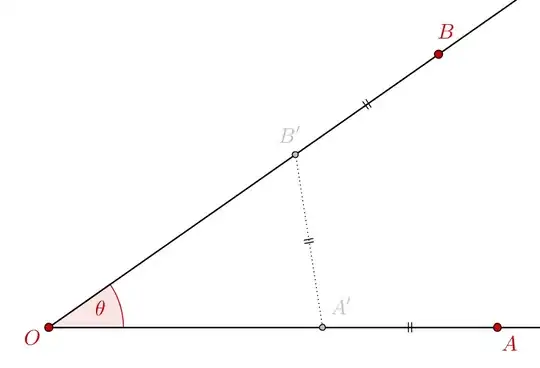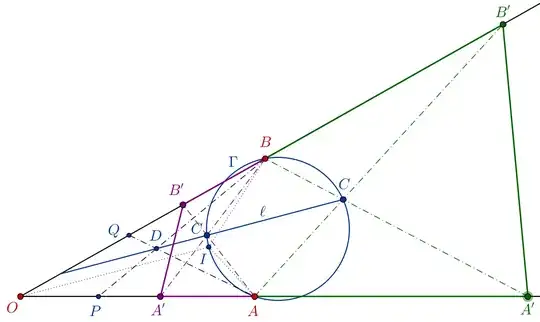Three points $A,O,B$ are given, and $0<\theta=\widehat{AOB}<\frac{\pi}{3}$.
It is known that there are two points $A',B'$ on the segments $OA,OB$ such that $$ BB'=B'A'=A'A $$ holds. How to find them with straightedge and compass?
The problem is straightforward to solve through trigonometry: if we set $$OA=A,\;OB=b,\;\cos\theta=c,\; AA'=x$$ it boils down to solving the second-degree equation: $$ (a-x)^2+(b-x)^2 - 2(a-x)(b-x)c = x^2, $$ but I wasn't able to find an elegant solution through straightedge and compass only.

